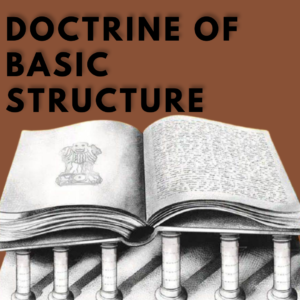Understanding the Basic Structure Doctrine.
INTRODUCTION

On 13th May 2021, the Kenyan High Court delivered a ground breaking judgment which officially recognized, among other things, what is called the “Basic Structure Doctrine” This was in the case of David Ndii & Others versus Attorney General & Others {2021} eKLR
In this case, the Petitioners asked the court to declare the Bill to Ammend the Constitution of Kenya , also known as the Building Bridges Initiative (BBI) uncontstitutional as its main purpose was to actually replace the constitution rather than amend it.
The court, in the above-mentioned case, stated as follows:
“From a holistic reading of the Constitution, its history and the context of the making of the Constitution, the Basic Structure of the Constitution consists of the foundational structure of the Constitution as provided in the Preamble; the eighteen chapters; and the six schedules of the Constitution. It also includes the specific substantive areas Kenyans thought were important enough to pronounce themselves through constitutional entrenchment including land and environment; Leadership and Integrity; Public Finance; and National Security. The Basic Structure Doctrine protects the core edifice, foundational structure and values of the Constitution but leaves open certain provisions of the Constitution as amendable through the procedures outlined in Articles 255, 256 and 257 of the Constitution in as long as they do not change the Basic Structure.”
This article discusses in brief the basic structure doctrine which was among the constitutional principles relied upon by the court in arriving at its decision declaring the amendment process unconsitutitonal.
Origins of the Basic Structure Doctrine

The Basic Structure doctrine has its origins in India. The Indian Constitution granted its parliament limited power to amend the constitution. In the case of Minerva Mills Ltd versus Union of India AIR 1980 SC 1789, the Supreme Court of India stated that Parliament cannot seek to amend the constitution in a manner that destroys its essential and basic features. This formed the basis for what later on became known as the basic structure doctrine.
The Basis for the Doctrine

In simple terms, the basic structure doctrine states that there must be a difference between amending a constitution and replacing the constititution.
An amendment to a constitution can only make minor alterations to the constitution without departing from the fundamental structure of the constitution. This howver does not mean that the constitution cannot be replaced. Replacement of a constitution would then need the people to exercise their constitutent power through a referendum. The people would need to know that they are replacing the entire constitution and not merely amending it.
In a separate article, we will discuss the procedure for amendment of the Kenyan constitution as set out under Chapter Sixteen of the Constitution of Kenya.
Conclusion
I urge you the reader to take time and watch the video at the top of this article in order to understand more about the Basic Structure Doctrine especially as it is sought to be applied in Kenya. At Begi’s Law, we are here to clarify all legal points for you.



Thanks for shading some light
Pingback : Understanding the Basic Structure Doctrine. - Advocates.ke Insights
Very informative, thank you
this is an excellent piece of information
Thank you very much for this succinct but extremely enlightening brief. Mungu akubariki sana!
Hello Gawaya, Thank you for taking your time to read through our article, we are glad it was helpful. Keep it locked for more articles.
thankyou
You are welcome Nonnie.
Looking forward to being of service to you.
Pingback : Understanding the Basic Structure Doctrine. – Legal Insights and Trends In Kenya